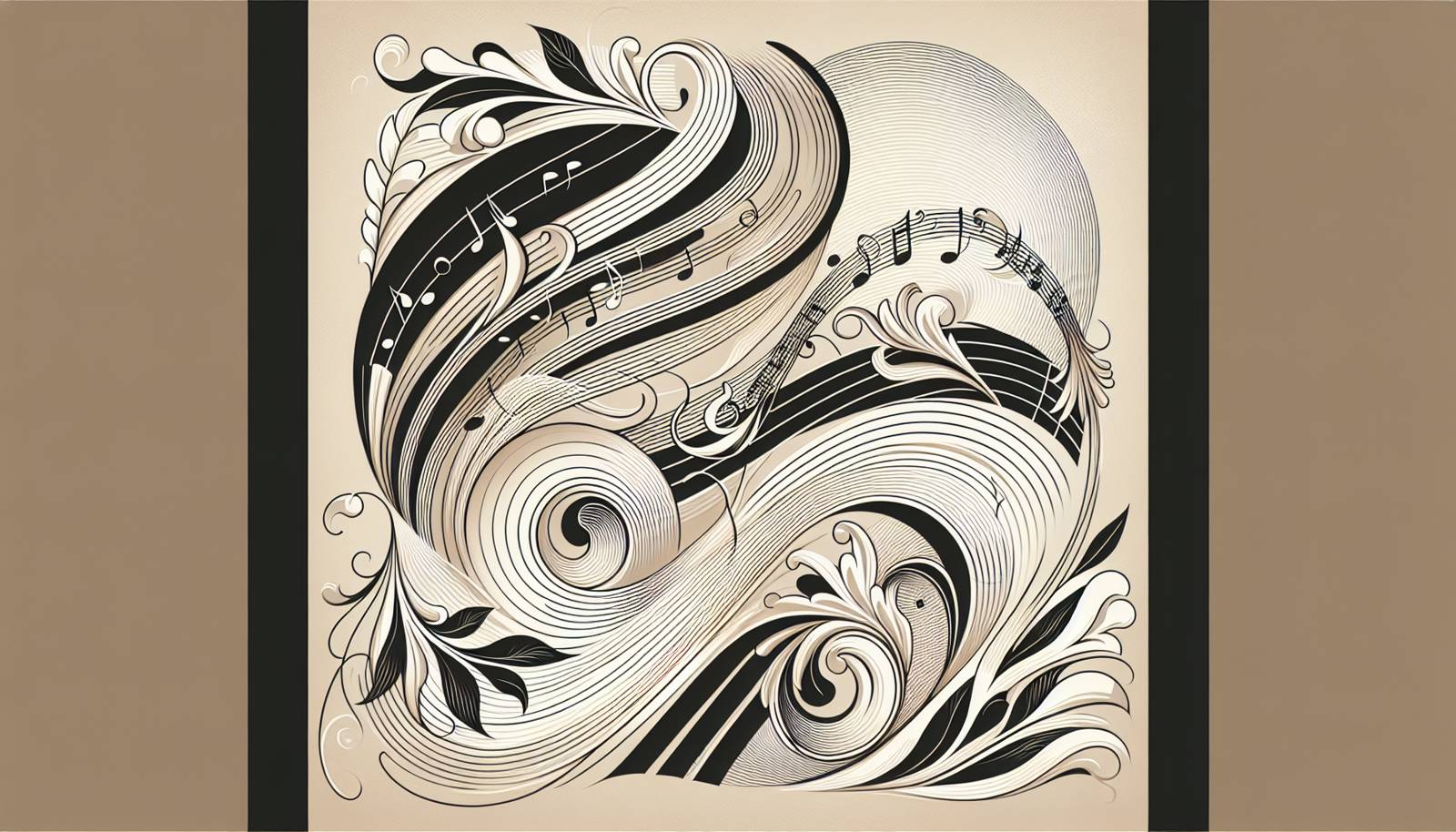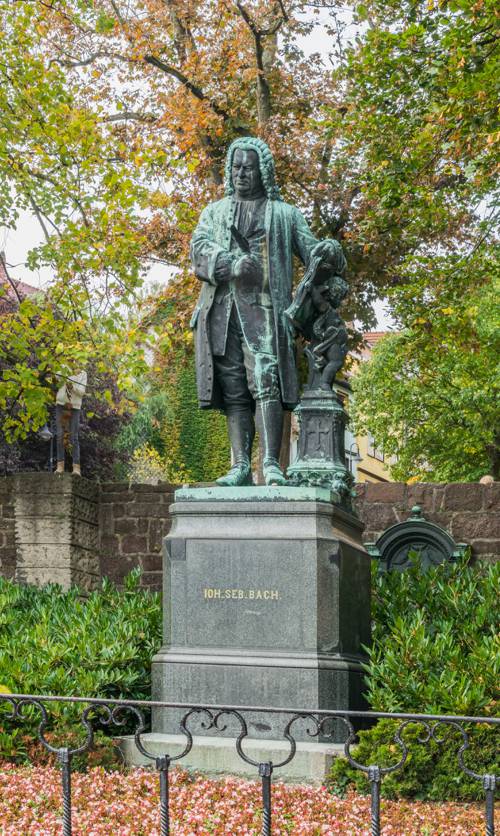
FAQ About Johann Sebastian Bach

Who was Johann Sebastian Bach?
Johann Sebastian Bach was a German composer and musician of the Baroque period, born on March 31, 1685, in Eisenach, Germany. He is widely regarded as one of the greatest composers of all time, known for his intricate compositions and contribution to classical music. His works include well-known pieces such as the Brandenburg Concertos and The Well-Tempered Clavier.

What musical era did Johann Sebastian Bach belong to?
Johann Sebastian Bach belonged to the Baroque era, which lasted from approximately 1600 to 1750. This period is characterized by elaborate musical ornamentation, new exploration of harmonic structures, and the birth of many musical forms that are still used today.

What are the Brandenburg Concertos?
The Brandenburg Concertos are a collection of six instrumental works composed by Johann Sebastian Bach. Each concerto is unique and showcases different instrumental combinations, reflecting Bach's skill in creating complex but engaging musical compositions. These works are considered some of the finest examples of Baroque orchestral music.

Why is The Well-Tempered Clavier significant?
The Well-Tempered Clavier by Johann Sebastian Bach is significant because it consists of two books of preludes and fugues in all 24 major and minor keys. This work not only demonstrates Bach's mastery of various musical styles and forms but also showcases the possibilities of playing in different keys, promoting the use of equal temperament tuning, which became a foundation for modern Western music.

How did Bach influence classical music?
Johann Sebastian Bach influenced classical music through his development of musical forms, such as the fugue and the sonata. His complex polyphonic style laid the groundwork for future composers. Bach's exploration of harmonic structure and counterpoint had a lasting impact on composers like Mozart, Beethoven, and Brahms, helping to shape the evolution of Western classical music.

Did Bach write any vocal music?
Yes, Johann Sebastian Bach composed an extensive amount of vocal music, including sacred and secular works. His vocal compositions include cantatas, oratorios, masses, and motets. Notable examples include the "St. Matthew Passion," the "St. John Passion," and the "Mass in B minor," which are revered for their emotional depth and technical complexity.

What is a cantata, and how did Bach contribute to this form?
A cantata is a vocal composition with instrumental accompaniment, often involving a choir. Johann Sebastian Bach made significant contributions to this form, writing over 300 cantatas, though only about 200 have survived. His church cantatas, such as "Wachet auf, ruft uns die Stimme," are celebrated for their intricate structures and expressive power.

Where did Bach work during his career?
Throughout his career, Johann Sebastian Bach worked in various locations in Germany. He held positions as a court musician in Weimar and Cöthen and later served as the Thomaskantor (music director) in Leipzig. Each of these positions allowed Bach to compose a wide range of music, from chamber music to large-scale choral works.

What instruments did Bach compose for?
Johann Sebastian Bach composed music for a wide array of instruments. His compositions include works for keyboard instruments like the harpsichord and organ, as well as pieces for violin, cello, flute, and other orchestral instruments. His ability to compose for different instruments showcases his versatility as a composer.

How is Bach’s music used today?
Bach's music remains profoundly influential, regularly performed and recorded worldwide. It is studied extensively in music education due to its complex structures and technical demands. His compositions are also used in various modern contexts, from orchestral and chamber music concerts to film scores and educational programs, highlighting their timeless appeal.

What was Bach’s personal life like?
Johann Sebastian Bach had a rich personal life. He was born into a musical family and was married twice. His first wife, Maria Barbara Bach, passed away in 1720, and he later married Anna Magdalena Wilcke in 1721. Bach fathered 20 children, several of whom became notable musicians themselves, continuing his legacy.

What challenges did Bach face in his career?
Bach faced several challenges throughout his career, including disputes with employers over his salary and artistic freedom. Despite his prodigious talent, he was not widely famous during his lifetime, overshadowed by more popular contemporaries. Nevertheless, he remained dedicated to his craft, producing an extensive body of work that would gain recognition long after his death.

How did Bach pass away?
Johann Sebastian Bach passed away on July 28, 1750, in Leipzig, Germany. His health deteriorated after a failed eye operation, and he is believed to have died of complications related to a stroke. Bach's death marked the end of the Baroque period in music.

Are there any misconceptions about Bach’s music?
A common misconception about Bach’s music is that it was well-received during his lifetime. In reality, it was not until the 19th century, notably with the efforts of composers like Felix Mendelssohn, that Bach's works gained significant recognition. Another misconception is that his music is purely academic, lacking emotion, whereas in fact, his compositions are deeply expressive and scientific.

Who are some composers influenced by Bach?
Many composers have been influenced by Johann Sebastian Bach, including Wolfgang Amadeus Mozart, Ludwig van Beethoven, Johannes Brahms, and Felix Mendelssohn. Bach's techniques in harmony, counterpoint, and form have inspired generations of composers and remain a cornerstone in the study of classical music.

What is the Mass in B Minor?
The "Mass in B Minor" is a celebrated choral work by Johann Sebastian Bach. It is one of his most complex and monumental compositions, encompassing all parts of the Latin Mass. The work is renowned for its intricate counterpoint and deep emotional expression, showcasing Bach's mastery of choral music.

What did Bach contribute to organ music?
Johann Sebastian Bach made substantial contributions to organ music, composing hundreds of pieces that are cornerstones of the organ repertoire. His works, like the "Toccata and Fugue in D minor" and the "Passacaglia and Fugue in C minor," display his extraordinary talent in creating complex textures and profound musical narratives using the organ.

How did Bach teach music?
Johann Sebastian Bach was an accomplished teacher, instructing students in both practical and theoretical aspects of music. He emphasized rigorous training in counterpoint, harmony, and composition, often using his own works as teaching materials. Bach trained his children and students who would later become influential composers and musicians.

Why is Bach considered a musical genius?
Johann Sebastian Bach is considered a musical genius due to his unmatched ability to blend technical complexity with artistic creativity. His mastery of counterpoint, harmonic innovation, and form has made his compositions timeless. Bach's influence has transcended his era, leaving a profound impact on the development of Western music.

What are some well-known compositions by Bach besides the Brandenburg Concertos and The Well-Tempered Clavier?
Besides the Brandenburg Concertos and The Well-Tempered Clavier, other well-known compositions by Johann Sebastian Bach include the "St. Matthew Passion," the "Goldberg Variations," "Mass in B Minor," "Toccata and Fugue in D Minor," and "Air on the G String." These works showcase Bach's extraordinary range and influence in various musical forms and styles.
